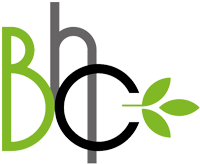
Customizing Bond Repairing Treatments for Unique Repair Requirements
- By:BINGO
- 2024-09-11
- 70
Introduction
The emergence of bond repairing treatments has revolutionized the field of haircare, offering unprecedented solutions for damaged and compromised locks. These innovative treatments employ advanced technologies that repair broken bonds within the hair structure, restoring strength, elasticity, and shine. However, recognizing the diverse nature of hair damage, it is essential to customize bond repairing treatments to cater to unique repair requirements. This article explores the importance of customizing bond repairing treatments, highlighting various factors that should be considered to optimize results.
Damage Assessment and Repair Goals
The foundation of customized bond repairing treatments lies in a thorough assessment of hair damage. Factors such as heat styling, chemical treatments, environmental exposure, and genetic predisposition contribute to different types and levels of damage. Understanding the specific damage characteristics allows hairstylists and treatment providers to select the most suitable bond repairing treatment. For instance, treatments with higher concentrations of repairing agents may be necessary for severe damage, while milder treatments can effectively address superficial damage.
Hair Type and Porosity
Hair type and porosity significantly influence the efficacy of bond repairing treatments. Fine or low-porosity hair tends to have tightly packed cuticles, limiting the penetration of treatment ingredients. In such cases, treatments with smaller molecules and longer contact times are recommended to ensure adequate penetration and repair. Conversely, coarse or high-porosity hair has more open cuticles, allowing for quicker absorption of treatment ingredients. However, it may require additional conditioning and sealing steps to prevent oversaturation and potential damage.
Protein and Moisture Balance
The balance between protein and moisture is crucial for the optimal repair and maintenance of hair health. Bond repairing treatments typically contain a combination of protein-rich amino acids and moisturizing agents. The proportion of these ingredients should be tailored to the individual’s hair needs. For hair lacking protein, treatments with higher levels of amino acids can help rebuild structural strength. On the other hand, moisture-laden treatments are essential for hydrating dry and brittle hair. Customizing the treatment formula ensures that both protein and moisture requirements are met, promoting long-term hair health.
Treatment Compatibility and Sequencing
It is important to consider the compatibility of bond repairing treatments with other haircare products and services. Some treatments may be incompatible with certain styling products or chemical treatments, potentially compromising the treatment’s efficacy or even causing further damage. Additionally, the sequencing of treatments plays a role in achieving optimal results. For example, pre-treating hair with a clarifying shampoo can enhance the penetration of the bond repairing treatment, while post-treatment conditioning can help seal in the repair benefits.
Customizing bond repairing treatments is paramount to address the unique repair requirements of individual hair. By considering factors such as damage assessment, hair type, porosity, protein and moisture balance, and treatment compatibility, hairstylists and treatment providers can optimize the outcomes of these transformative haircare solutions. Tailoring treatments to each client’s specific needs ensures that hair regains strength, elasticity, and vitality, ultimately leading to beautiful, healthy locks.
-
Minimalist Skin Care: Return To The Natural Beauty Of The Skin
2024/07/19 -
Wonderful Review: BINGO shines at Cosmoprof Worldwide Bologna
2024/04/12 -
Exploring the Multiple Benefits of Body Scrubs
2023/10/20 -
The Correct Way to Use Skin Care Products: A Comprehensive Guide
2023/10/20 -
Why Sustainable and Natural Hair Care Products Are the New Trend
2023/10/19 -
What Are the Benefits of Marula Oil for Hair?
2023/01/05
-
1
Hey friend! Welcome! Got a minute to chat?
CONTACT US

Bingo Cosmetic Manufacture Ltd.
We are always providing our customers with reliable products and considerate services.
If you would like to keep touch with us directly, please go to contact us













